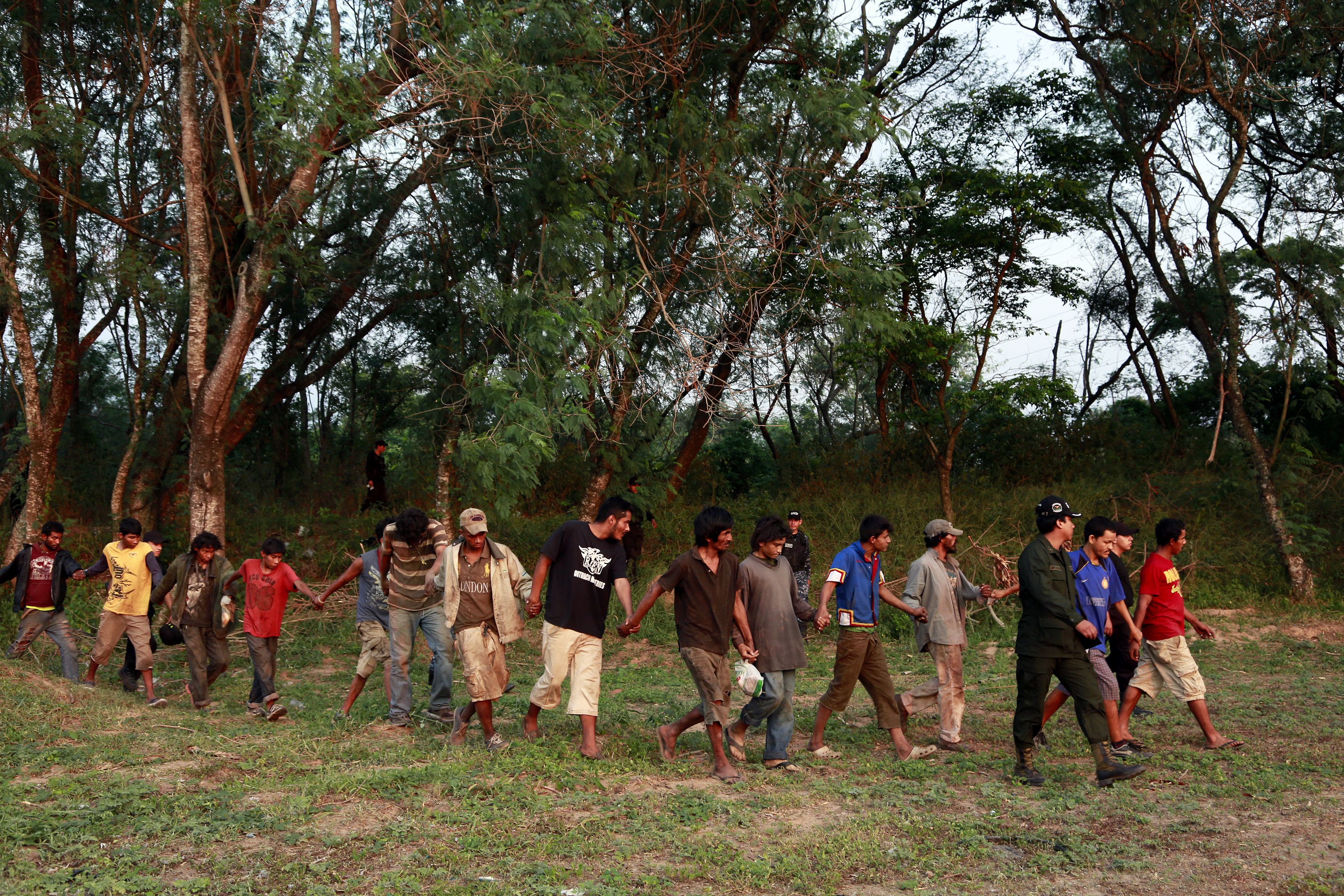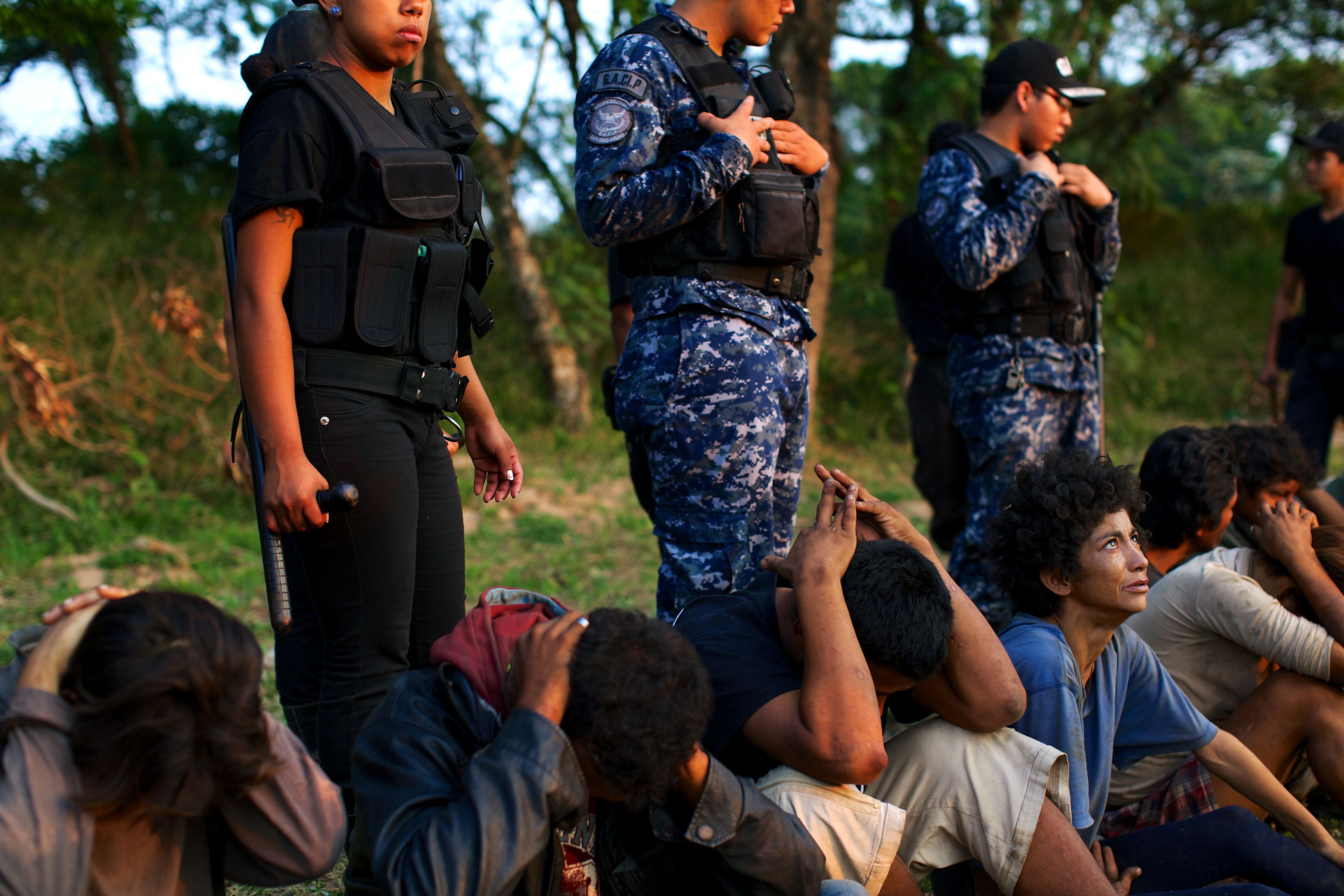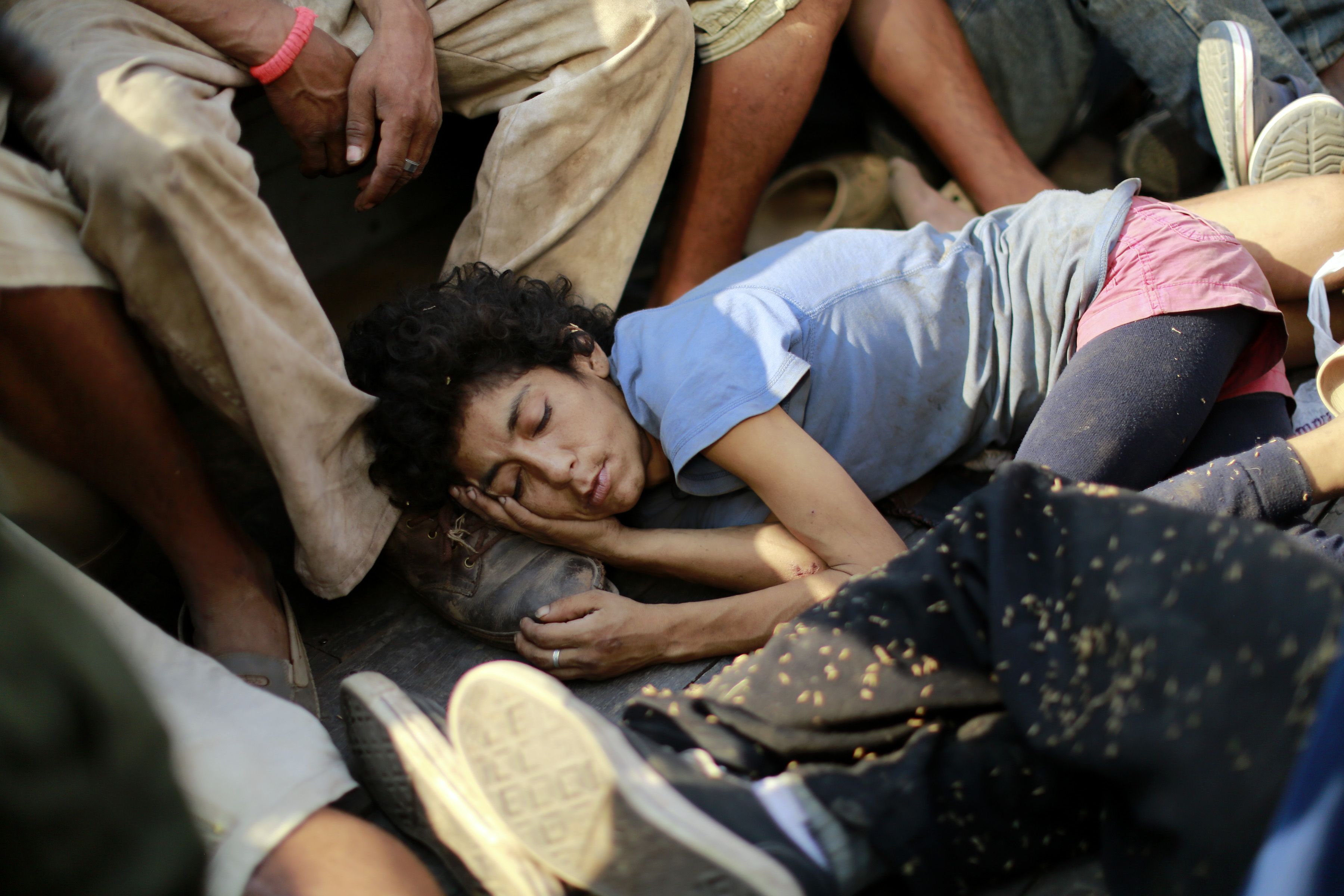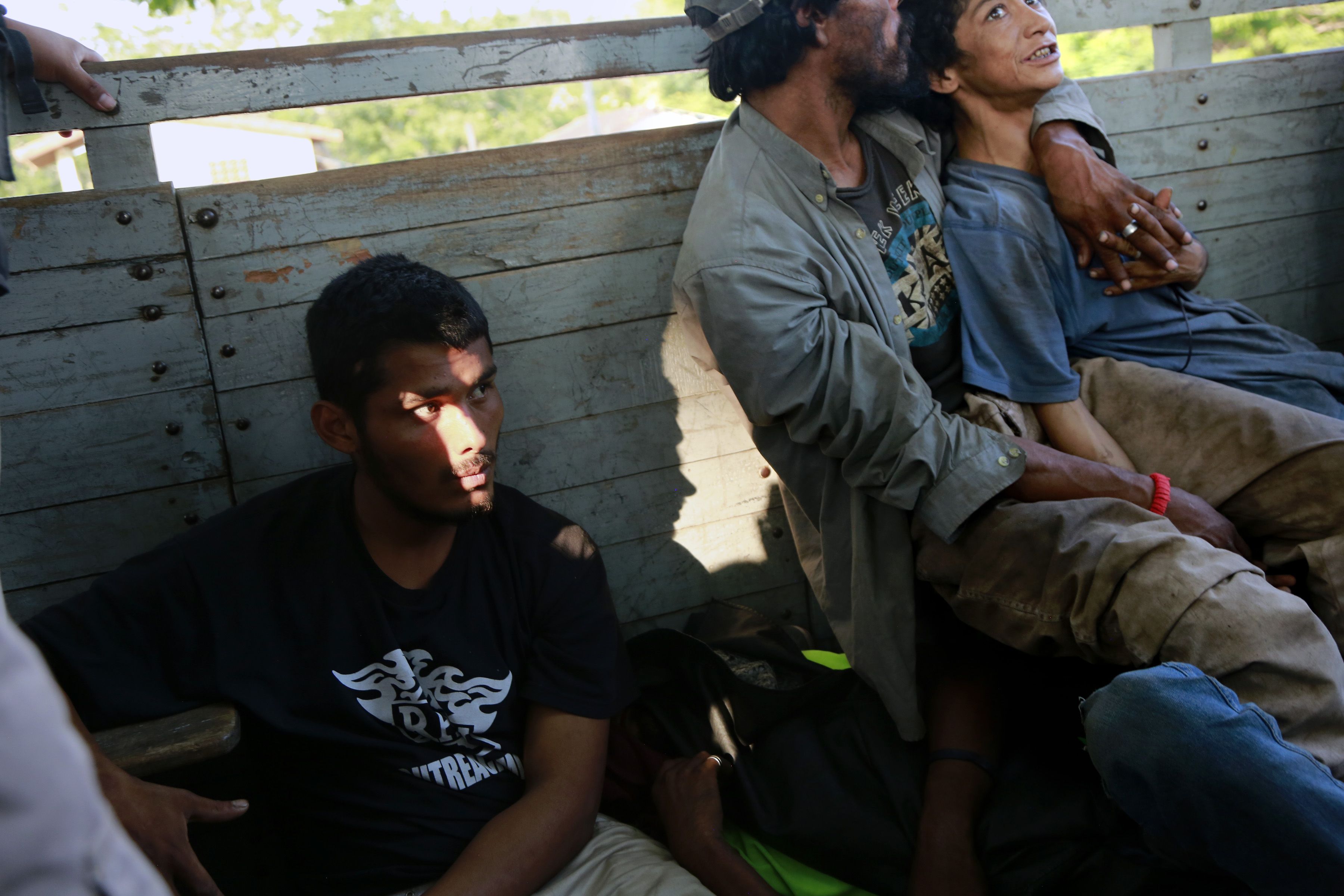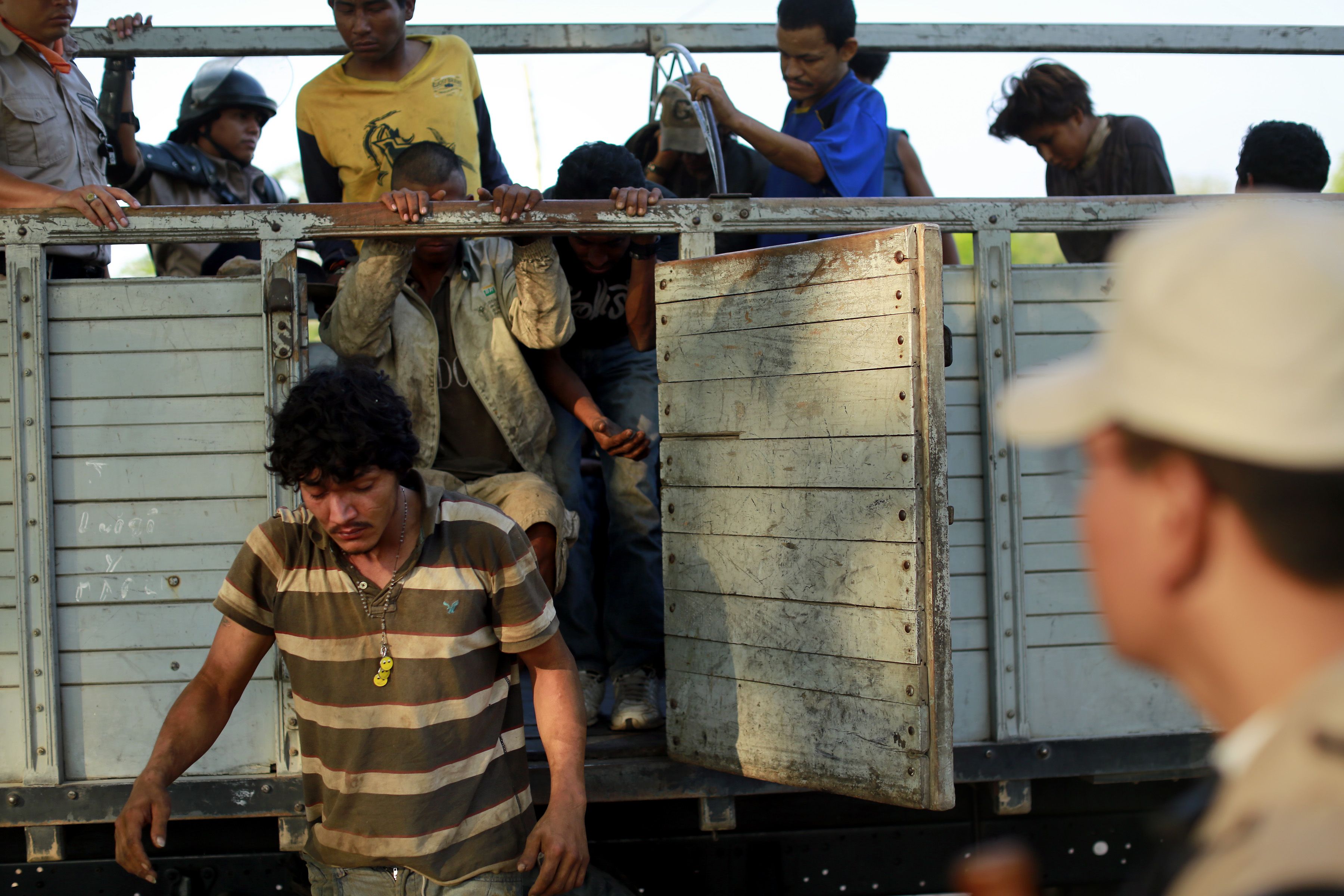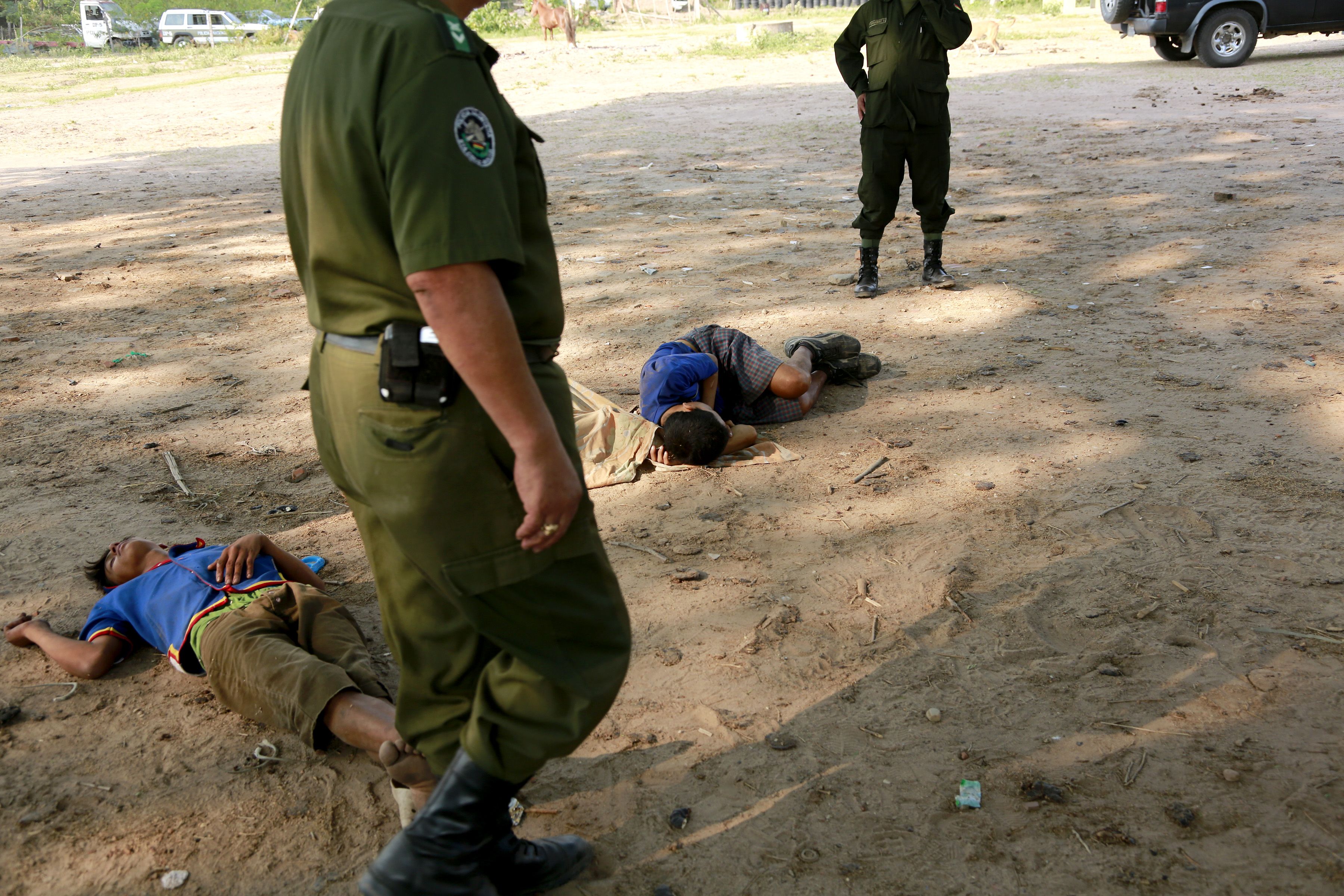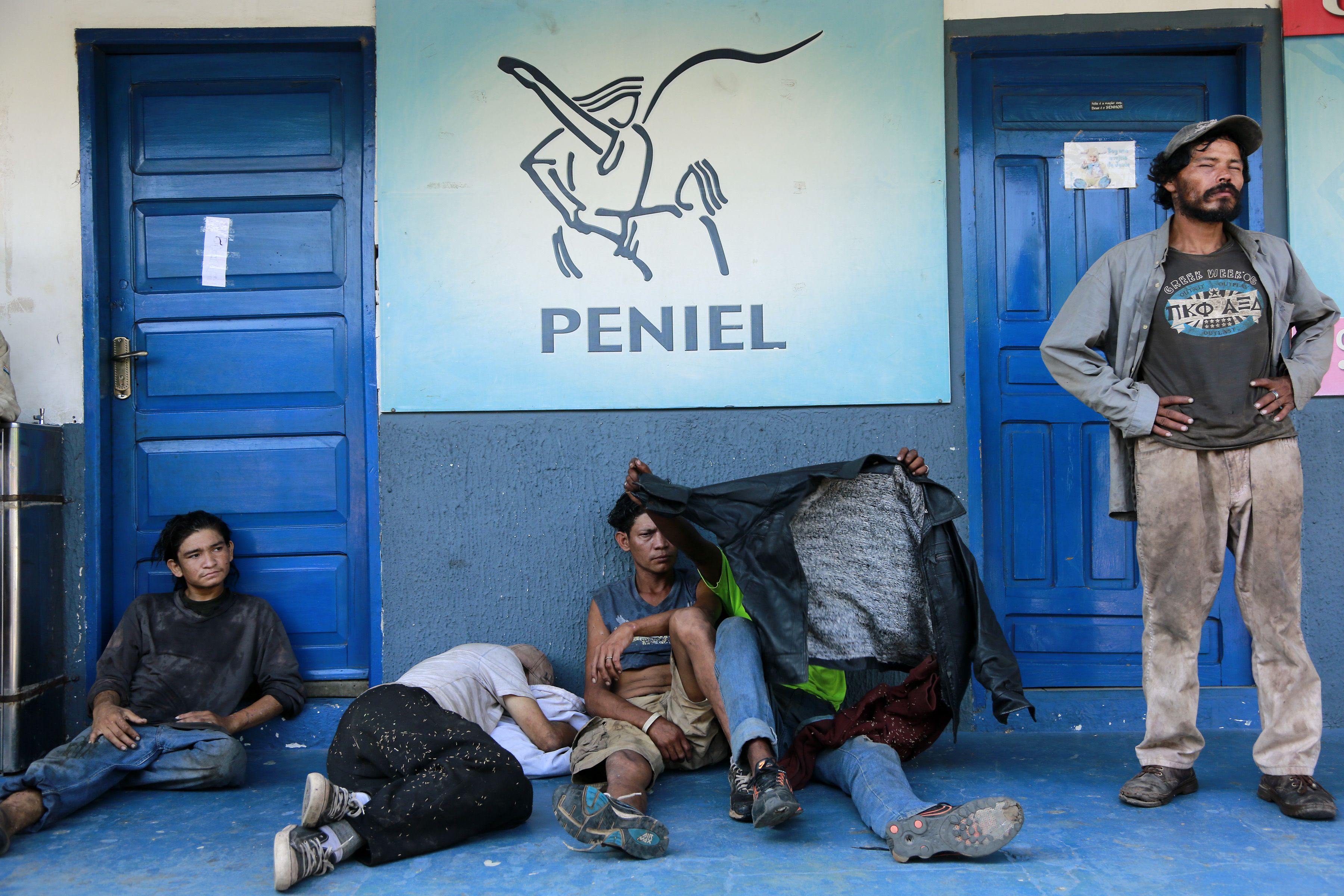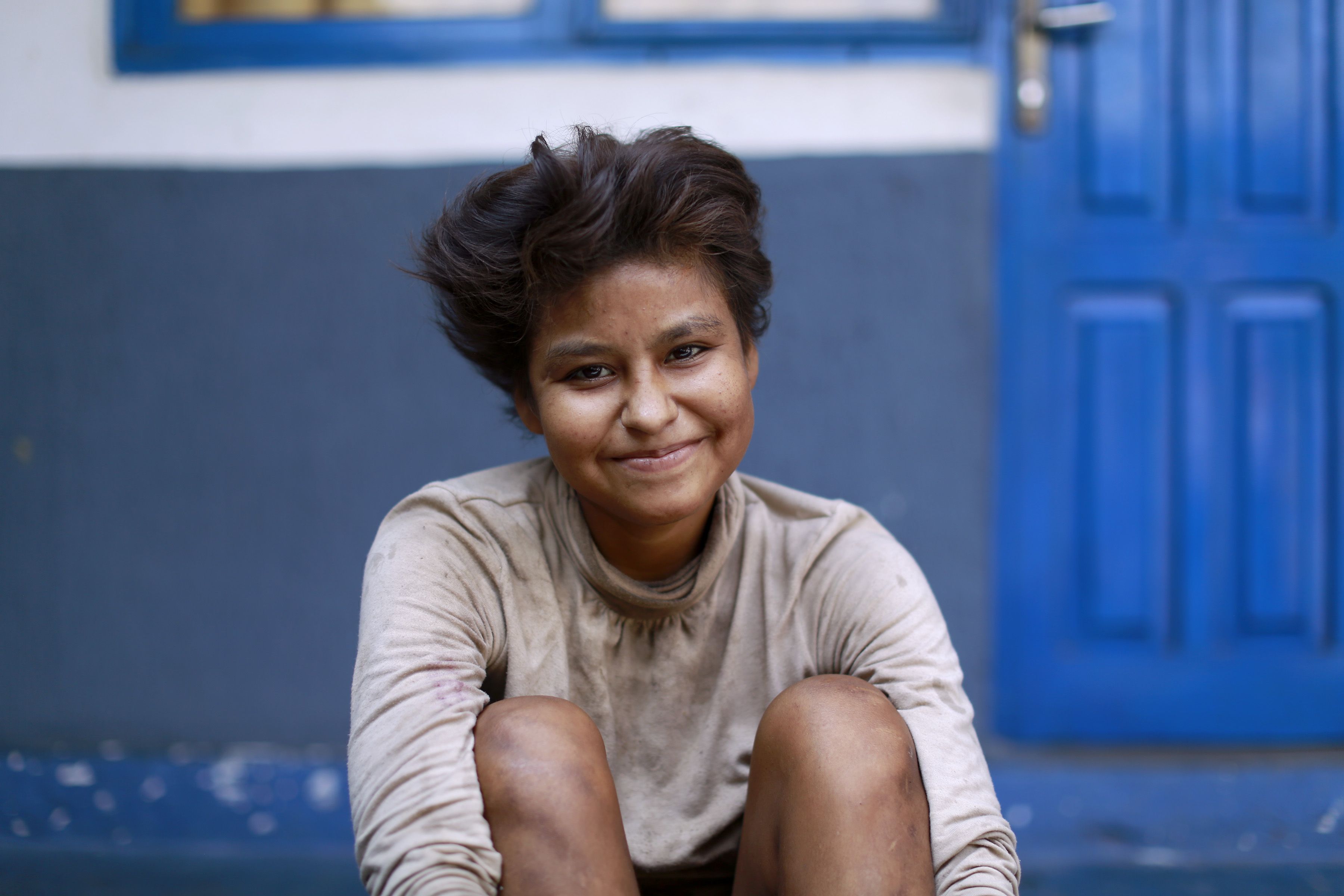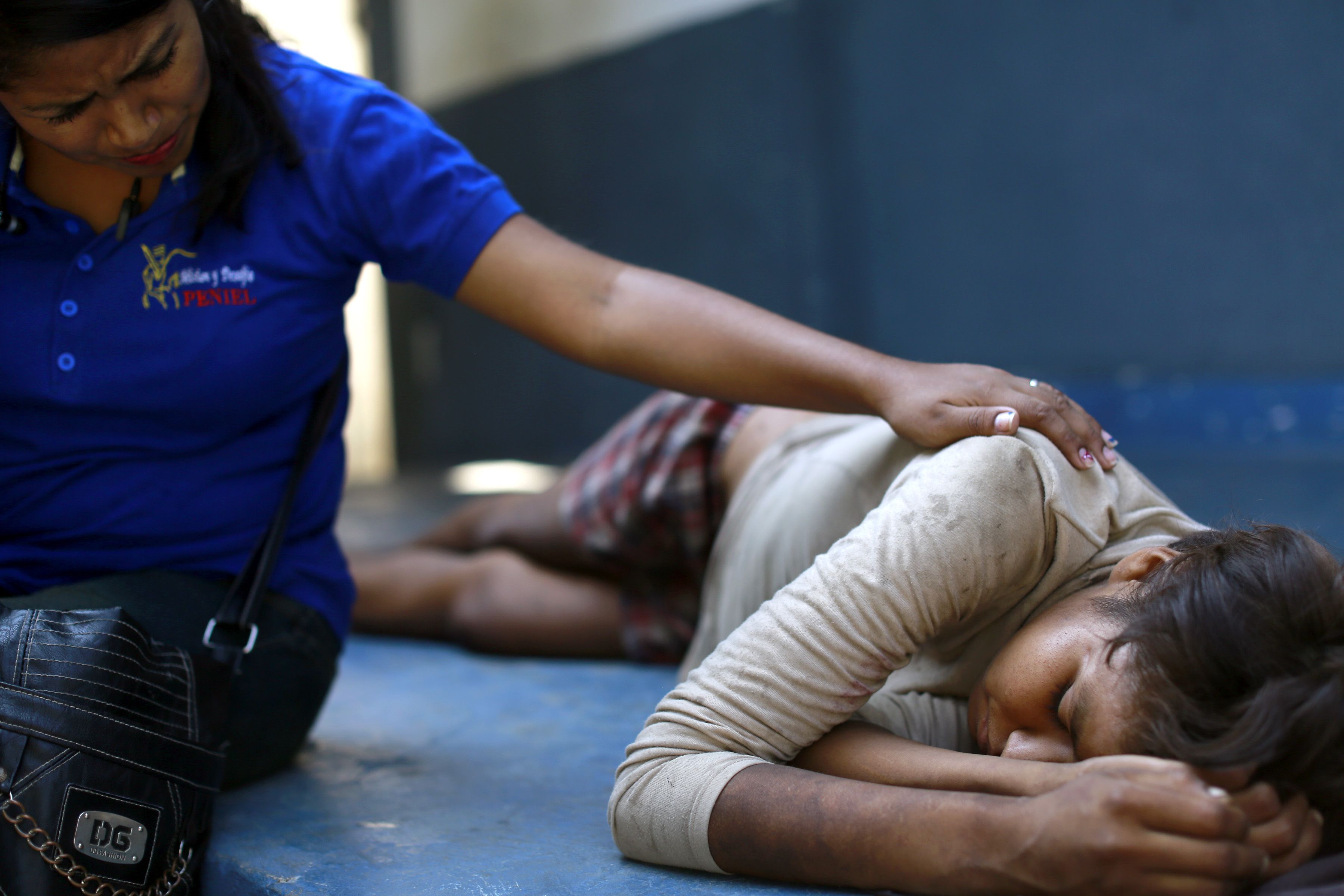(Text by Sara Shahriari. Images by Noah Friedman-Rudovsky.)
It's dawn in Santa Cruz, Bolivia, but the air is already steamy as police and departmental social services gather in a field by the side of a highway. At their feet sit some 20 people ranging in age from late teens to 40-something, all dirt-stained skin and bones. They live in the nearby copse of scrubby trees, sheltering under blankets and tarps, many getting high on cheap drugs like glue and a cocaine base known as paco. The local press is full of stories about how their presence frightens and upsets neighbors.
Today, as they do every few weeks, police tear through the camp, throwing everything—blankets, notebooks, tubes of toothpaste and an old suitcase—into a trampled pile and carrying the people away to a shelter in the back of a truck. But unless they are minors, no one can make them stay in a shelter—and every week more people are flushed out of the trees.
Rosario Chavez, a social worker with the regional government who works with the homeless, says there is one powerful common experience shared by many of the people she works with.
"Violence is, above all, what puts kids out on the street," she says.
Today there are just two women mixed in among the men. The street is a violent place for anyone, but for women the risk of sexual violence is extraordinary high.
"They are easy prey," Chavez says.
Many cities struggle with homelessness and drug use, but options for people in Santa Cruz are particularly limited, especially when it comes to finding centers that can offer the medical, social work and psychological support addicts need. Chavez talks about a young woman named Alejandra, who is sleeping in the center's courtyard. She is a wraith, marked by sores, and appears to be a few months pregnant.
"Her future is probably to die in the street," Chavez sighs. "One wants to help her, there are centers that help, but if two hours from now her body requires drugs, she leaves. The centers cannot obligate people – it's against their rights." Chavez thinks that closed centers, where people would be compelled to undergo treatment, should be considered. "If we have a closed center with a specialized team that helps take away the drugs little by little - then in five years that person will be changed. If we don't get a center like that what can be expected? ... People who die in the streets, as they do now."
Chavez's colleague, psychologist Fernanda Castedo, agrees that violence is a major factor contributing to the growing problem of homelessness in Santa Cruz, but adds that when parents migrate away from Santa Cruz in search of work, leaving children with distant family members, those young people become extremely vulnerable to violence, drugs, homelessness and the influence of gangs.
The truck carrying people pulled from the forest earlier in the morning finally reaches the evangelical-run shelter and rehab facility on the other side of town. Herded out of the truck and into the courtyard, some people lie down, and others sit slumped against a wall while staff tell them why they should stay. Then, slowly, nearly every single person stands up and ambles out the door, back onto the street. Alejandra sleeps on.
Across town in the cloistered interior of a plain, white-walled building are girls who have also lived through the horrors of violence in their homes—in this case sexual violence at the hands of family members. The country's independent human rights office has republished information from reports that state 34 percent of Bolivian girls suffer sexual abuse before their 18th birthday.
Sister Rossemary Ayala Rossells leads this home, which can house up to 25 girls between 12 and 18 years old. There are now 23 residents. Compared to the people squatting in the forest, these girls have landed in a much better place—but that doesn't mean there will be justice for them.
"At first, sometimes they feel locked up and punished while the aggressor goes free," Ayala Rossells says, adding that a very small percentage of cases against abusers end in convictions.
The house offers therapy, both individual and group, theater and all sorts of arts and crafts classes. All the girls attend school, some inside the house and others outside in traditional high schools.
Sitting in a circle in the warm late afternoon sunlight, the girls look so very young—in fact the oldest is just 16. Every person here says she plans to finish high school, and from there on their goals range from veterinary school to dentistry to cosmetology to traveling to the moon.
One of the longest-term residents talks about her house, "It's important to me because I learned what love is, and family," she says. "There has be love, and a lot of respect."
